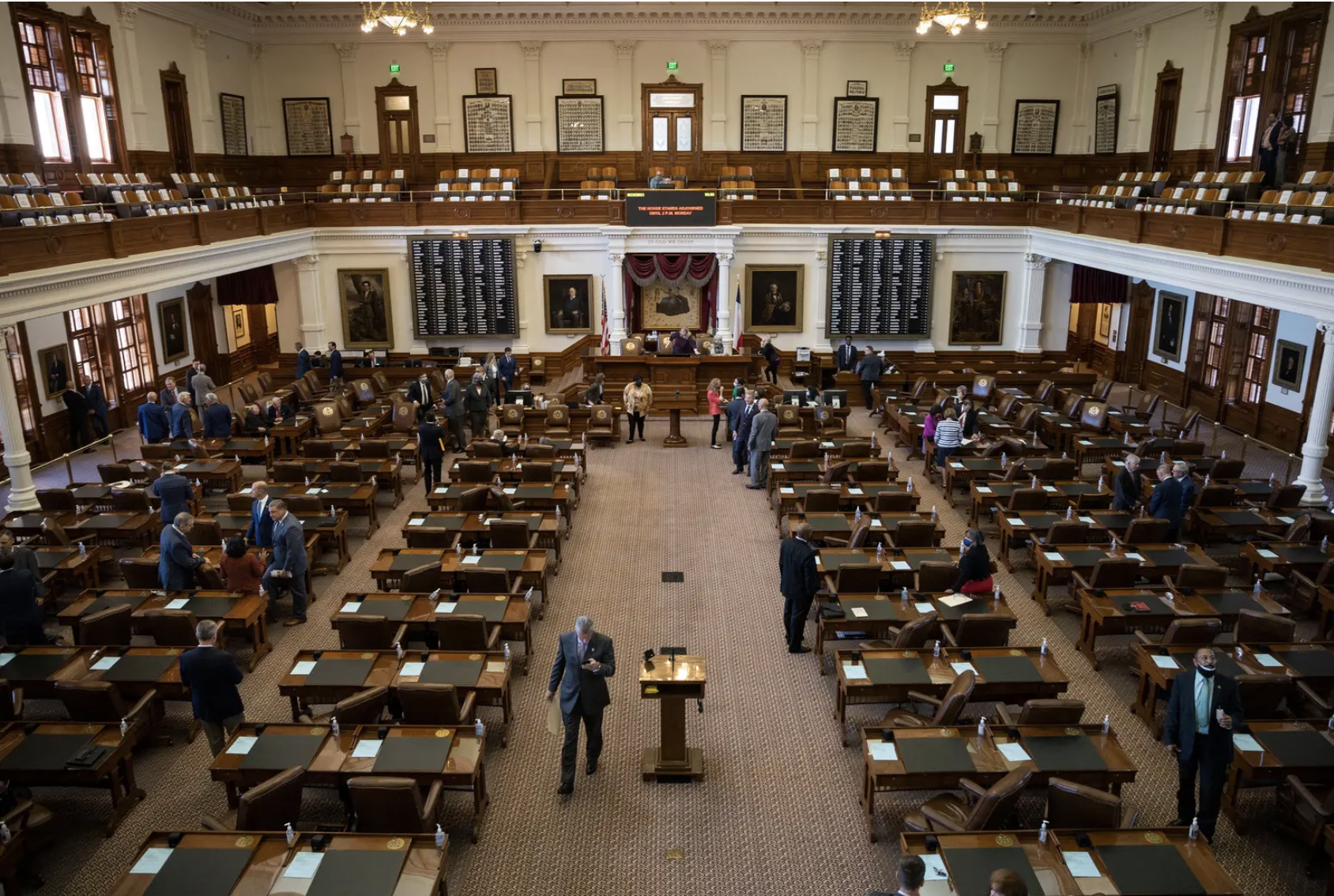
President Donald Trump addressed Texas Republicans with a bold proposal to enhance the Republican Party's majority in the U.S. House of Representatives through a strategic redistricting effort in Texas.
Speaking as he departed the White House for Pittsburgh, Trump indicated plans to add five new GOP-friendly seats, a move that could significantly alter the political landscape ahead of the 2026 midterm elections.
The House currently comprises 220 Republican seats and 213 Democratic seats, with two vacancies, underscoring the narrow margin Republicans aim to protect.
Texas, with its 38 congressional seats—25 held by Republicans and 13 by Democrats—emerges as a critical battleground in this endeavor, reflecting Trump's intent to bolster his party's influence amid shifting political tides.
The proposal builds on discussions that have been underway for months, driven by concerns that Democrats might gain ground in other states during the midterms.
Redistricting, the process of redrawing electoral district boundaries, typically occurs decennially following the census, but this mid-cycle initiative follows the recent passage of the One Big Beautiful Bill Act.
This legislation, enacted with sweeping policy and spending changes, has polarized public opinion, setting the stage for a contentious redistricting debate.
Trump’s 20-minute conversation with Texas GOP members emphasized his goal of securing five additional seats, a strategy designed to counteract the historical trend of the president’s party losing seats in midterm elections.

In 2018, during Trump’s first term, Democrats gained 41 House seats, a precedent that fuels current Democratic optimism if Trump’s approval ratings remain low.
Recent polling by the Texas Politics Project, conducted in June 2025, reveals a challenging approval landscape for Trump in his second term. A majority of Texans—51 percent—expressed disapproval, with 44 percent strongly disapproving and 7 percent somewhat disapproving, while only 44 percent approved, including 27 percent strongly and 17 percent somewhat.
This shift suggests potential vulnerability for Republicans, prompting the redistricting push as a preemptive measure. The plan involves redrawing district lines to incorporate more Republican voters into currently Democratic-held seats, potentially making them competitive or shifting them to GOP control.
Vulnerable Democratic seats, particularly in South Texas where Trump narrowly prevailed in 2024, could be targeted, though the strategy risks backfiring if it dilutes Republican strongholds.
The political stakes are high, with the 2026 midterms poised to test Trump’s legislative agenda. A Democratic majority could obstruct his initiatives and launch investigations, a scenario he seeks to avoid.
Governor Greg Abbott has scheduled a special legislative session beginning July 21 to develop these plans, a move that has sparked intense reaction.
The Texas Democratic Party issued a statement condemning the effort as an attempt to rig the elections, accusing Republicans of exploiting recent floods to manipulate power.
They criticized Abbott as Trump’s puppet, vowing to mobilize against the plan and prioritize relief for affected families, who face higher taxes, reduced healthcare, and defunded public schools under current policies.

Democrats in Congress, including Texas Representative Jasmine Crockett, have voiced strong opposition. Crockett warned that the redistricting scheme aims to silence the voices of people of color, a concern echoed by her statement to reporters: "I need people of color to understand that the scheme of the Republicans has consistently been to make sure that they mute our voices. I fully anticipate that's where they are going with this map."
This critique aligns with historical patterns, as Texas Democratic strategist Joel Montfort noted to Newsweek, highlighting how the GOP has redrawn districts to favor Republicans despite Democrats representing 45 percent of the vote, yet holding only 40 percent of the delegation’s seats.
State Representative Mihaela E. Pleșa reinforced this sentiment, arguing that redistricting should focus on representation rather than manipulation, especially as Central Texas families recover from disaster.
Conversely, Texas Republican Senator John Cornyn offered a contrasting perspective, suggesting on social media that the redistricting could yield significant gains due to a rapid shift of Hispanic voters toward the GOP, attributing this trend to Trump’s influence.
This claim reflects a demographic realignment that Republicans hope to leverage, though it remains debated whether such shifts will hold in competitive districts.
The proposal’s feasibility hinges on the special session’s outcomes, where lawmakers will draft new maps using 2020 census data, despite a population growth of approximately 2 million since then.
This outdated data introduces uncertainty, as noted by experts who caution that aggressive gerrymandering could create more competitive districts, potentially benefiting Democrats in a favorable national climate.
The redistricting effort represents a high-risk strategy. Historical attempts, such as the 2011 map that expanded GOP majorities only to see losses in 2018, illustrate the potential for unintended consequences.

Adding Republican voters to Democratic districts may weaken safe GOP seats, a concern raised by some Texas Republicans who prefer preserving their current 25-13 advantage.
The Department of Justice’s recent letter, citing constitutional concerns about racial gerrymandering in four majority-minority districts, provides a legal pretext, though critics argue it serves as a political tool to justify the move.
This could lead to legal challenges, delaying implementation and risking the maps’ use in 2026, especially with the candidate filing deadline approaching.
Public sentiment, as observed through online discussions, reveals a polarized response. Some view the redistricting as a necessary defense against Democratic gains, while others decry it as voter suppression, particularly affecting minority communities.
The timing, following devastating floods, amplifies accusations of opportunism, with Democrats planning legal and fundraising efforts to counter the plan.
House Minority Leader Hakeem Jeffries has warned that an aggressive map could jeopardize Republican incumbents, suggesting a possible backfire that might expand the battleground.
This aligns with historical midterm trends favoring the opposition party, though Trump’s team sees a potential net gain of five seats as a cushion against losses elsewhere.
Internationally, the move may influence perceptions of U.S. democratic processes, especially if courts strike down the maps for violating the Voting Rights Act. Allies might question the stability of electoral outcomes, while adversaries could highlight perceived manipulation.

Domestically, the strategy could reshape Texas politics, with implications for national control of the House. California Governor Gavin Newsom’s warning of retaliatory redistricting in Democratic states adds a national dimension, though California’s independent commission poses a hurdle.
Other states, like Ohio, also face redistricting pressures, potentially amplifying the partisan map-drawing contest.
Legally, the process faces scrutiny. The Supreme Court’s 2023 ruling requiring Alabama to redraw districts for majority-minority representation sets a precedent, though its conservative majority may limit broader Voting Rights Act enforcement.
Texas’s history of court challenges, with maps violating the Act in every decade since 1965, suggests prolonged litigation. The special session’s rushed timeline, combined with population data discrepancies, could exacerbate these issues, testing the maps’ durability through one election cycle at minimum.
The psychological impact on lawmakers and constituents is notable. Trump’s push reflects a determination to secure his agenda, pressuring GOP members to align despite internal reservations.
Democrats, energized by 2018’s gains, see an opportunity to mobilize, though their success depends on turnout and legal outcomes. For Texans, the focus on political control amid recovery efforts underscores a disconnect, fueling public frustration.
The plan’s success will depend on legislative cohesion, judicial rulings, and voter response, with the July 21 session as a pivotal moment.
In conclusion, President Trump’s proposal to add five GOP seats through Texas redistricting represents a strategic bid to safeguard the Republican House majority ahead of the 2026 midterms.

Amid declining approval ratings and historical midterm losses, the plan leverages Texas’s 38 seats to counter Democratic gains, targeting vulnerable districts while navigating legal and demographic challenges.
Opposition from Democrats, citing voter suppression and exploitation, highlights a deepening partisan divide, with the special session set to shape the state’s electoral future.
The outcome will influence not only Texas representation but also the national balance of power, with long-term implications for governance, equity, and public trust through the 2026 elections and beyond.



